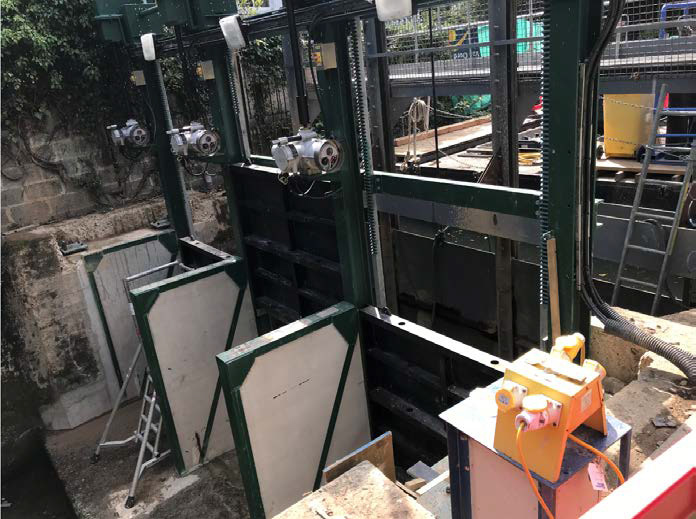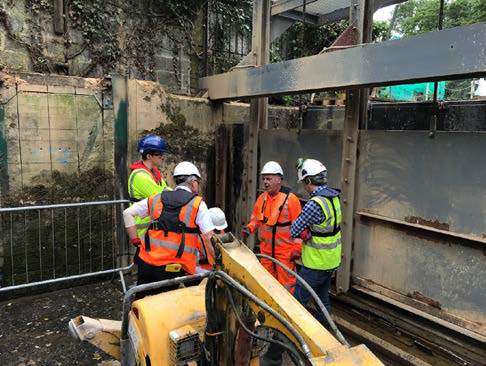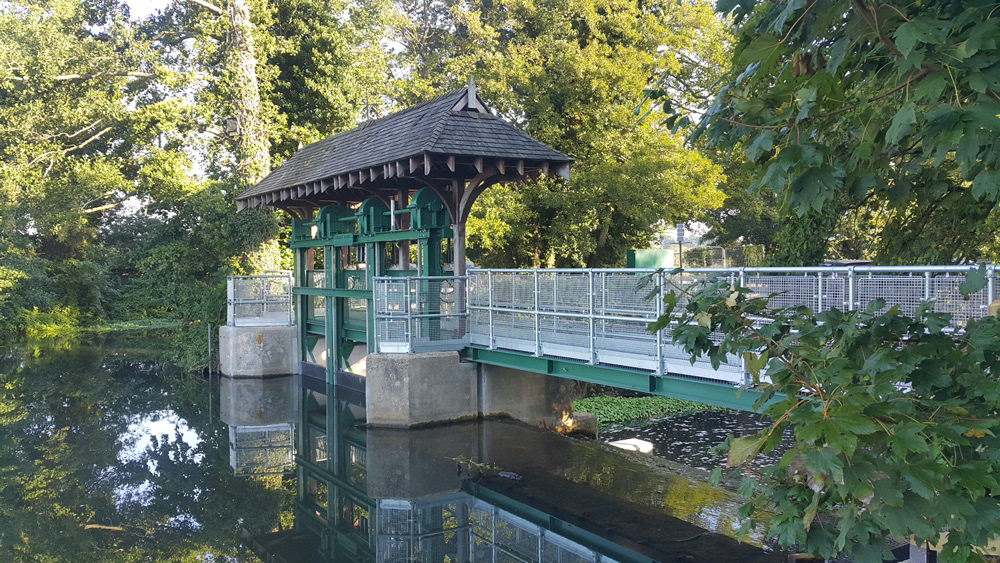






River Wey Weirs Refurbishment Scheme, Various locations
DEFRA Environment Agency
DEFRA Environment Agency
The River Wey is a tributary of the River Thames. The River Wey is one of the largest rivers that drain into the River Thames with a catchment area estimated at 904.3 km² of which, 29 km² is considered urban, whilst the length of the watercourse is 92 km.
The River Wey can be navigated by boat, on natural and man-made sections, along the ‘Wey and Godalming Navigations’. These navigations were constructed under Acts of Parliament in 1651 and 1760. In 1935, Surrey County Council made improvements along the River Wey, to reduce flood risk and maintain navigation, by installing a series of weirs.
Today the navigations are owned and operated by the National Trust. The Environment Agency is responsible for maintaining the navigation and 18 weir structures.
The River Wey Weirs Refurbishment Scheme (RWRS) focusses on seven of these weirs, which require priority refurbishment and replacement.
The scheme includes the detailed design, refurbishment or replacement of seven weir structures at:
∙ Millmead, Guildford
∙ Stoke Mill, Guildford
∙ Bowers Mill, Guildford
∙ Broadmead Weir, Woking
∙ Newark Mill, Woking
∙ Walsham Weir, Ripley
∙ Hamm Oils Mill, Weybridge
Photographs © DEFRA Environment Agency.
∙ Millmead, Guildford
∙ Stoke Mill, Guildford
∙ Bowers Mill, Guildford
∙ Broadmead Weir, Woking
∙ Newark Mill, Woking
∙ Walsham Weir, Ripley
∙ Hamm Oils Mill, Weybridge
RWRS is designed to maintain the River Wey’s navigation (water) levels, but also complement the River Wey flood alleviation schemes. The design meets current safety standards and is sympathetic to its navigation heritage, by reusing some original components.
Many of the weirs are located in environmentally designated areas, so the scheme also aims to enhance the river’s biodiversity by improving fish and eel passage.
The scheme's objective is to undertake refurbishment works which will extend the life of the Sluices and their Penstocks by a further 25 – 50 years bearing in mind where possible that the solution should be durable, sustainable and cost-effective. Sluices and Penstock gates have been constructed in high yield carbon steel protected against corrosion by hot dipped galvanizing followed by compatible paint system, i.e. Duplex Corrosion Protection System.
Following site investigations, and the development of environmental assessments, the design of new weirs has been completed.
Photographs © DEFRA Environment Agency.
